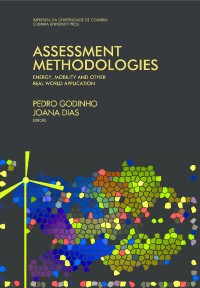Please use this identifier to cite or link to this item:
https://hdl.handle.net/10316.2/38155| DC Field | Value | Language |
|---|---|---|
| dc.contributor.author | Antunes, Patrícia | |
| dc.contributor.author | Ferreira, Pedro Lopes | |
| dc.contributor.author | Ferreira, Lara Noronha | |
| dc.date.accessioned | 2015-11-27T16:44:08Z | |
| dc.date.accessioned | 2020-09-10T16:37:16Z | - |
| dc.date.available | 2015-11-27T16:44:08Z | |
| dc.date.available | 2020-09-10T16:37:16Z | - |
| dc.date.issued | 2015 | - |
| dc.identifier.isbn | 978-989-26-1038-2 | |
| dc.identifier.isbn | 978-989-26-1039-9 (PDF) | |
| dc.identifier.uri | https://hdl.handle.net/10316.2/38155 | - |
| dc.description.abstract | The decision making process within a context of limited resources has important consequences on the health of individuals. The criteria by which health technology assessment and health interventions are decided, as well as the review of current procedures represent a challenge for decision makers in the face of the current economic slowdown. The decision making process requires a transparent and rational approach to ensure the maximization of health care and the reduction of inequalities. Economic evaluation techniques may provide a valid solution to achieve these goals. Preference based measures are part of economic evaluation techniques. These approaches incorporate utilities for health outcomes and can be used in cost-benefit analyses to aid resource allocation decisions. They may also meet the needs of citizens. However, the methodological challenges regarding particular situations and the preference based measures currently in use require further research in order to improve cost-benefit analysis and explore alternative preference elicitation methods for decision making. The comparative studies concerning the application of different techniques to obtain utility values show that techniques such as Discrete Choice Experiment are promising with regard to the use of the more traditional Visual Analogue Scale, the Time Trade- -Off and the Standard Gamble. However, this technique still presents challenges and requires improvements. Further applications of this technique along with the implementation of hybrid methods are needed to support the decision making process. This paper provides a brief description of each of these techniques and illustrates some of their applications. | eng |
| dc.language.iso | eng | - |
| dc.publisher | Imprensa da Universidade de Coimbra | por |
| dc.relation.ispartof | http://hdl.handle.net/10316.2/38126 | por |
| dc.rights | open access | - |
| dc.subject | Preference based decisions | eng |
| dc.subject | Standard Gamble | eng |
| dc.subject | Time Trade-Off | eng |
| dc.subject | Discrete Choice Experiment | eng |
| dc.subject | Economic Evaluation | eng |
| dc.title | Preference based decisions in health | por |
| dc.type | bookPart | por |
| uc.publication.firstPage | 191 | - |
| uc.publication.lastPage | 212 | - |
| uc.publication.location | Coimbra | por |
| dc.identifier.doi | 10.14195/978-989-26-1039-9_9 | - |
| uc.publication.digCollection | PB | por |
| uc.publication.orderno | 9 | - |
| uc.publication.area | Ciências Sociais | por |
| uc.publication.bookTitle | Assessment methodologies: energy, mobility and other real world application | - |
| uc.publication.manifest | https://dl.uc.pt/json/iiif/10316.2/38155/213159/manifest?manifest=/json/iiif/10316.2/38155/213159/manifest | - |
| uc.publication.thumbnail | https://dl.uc.pt/retrieve/11200199 | - |
| uc.publication.parentItemId | 54536 | - |
| uc.itemId | 70672 | - |
| item.grantfulltext | open | - |
| item.fulltext | With Fulltext | - |
| Appears in Collections: | Assessment methodologies: energy, mobility and other real world application | |
Files in This Item:
| File | Description | Size | Format | |
|---|---|---|---|---|
| preference_based_decisions_in_health.pdf | 1.08 MB | Adobe PDF |  |
Items in DSpace are protected by copyright, with all rights reserved, unless otherwise indicated.
